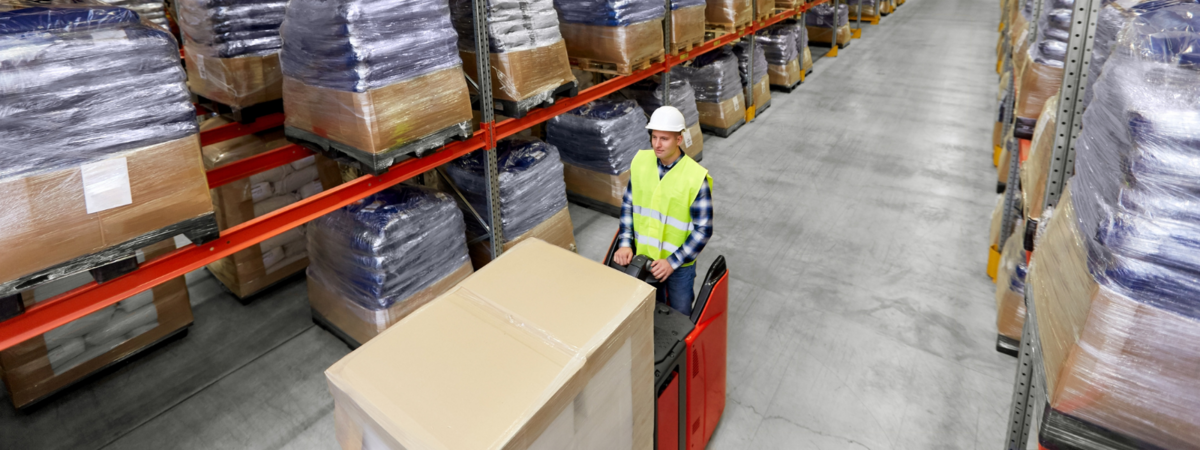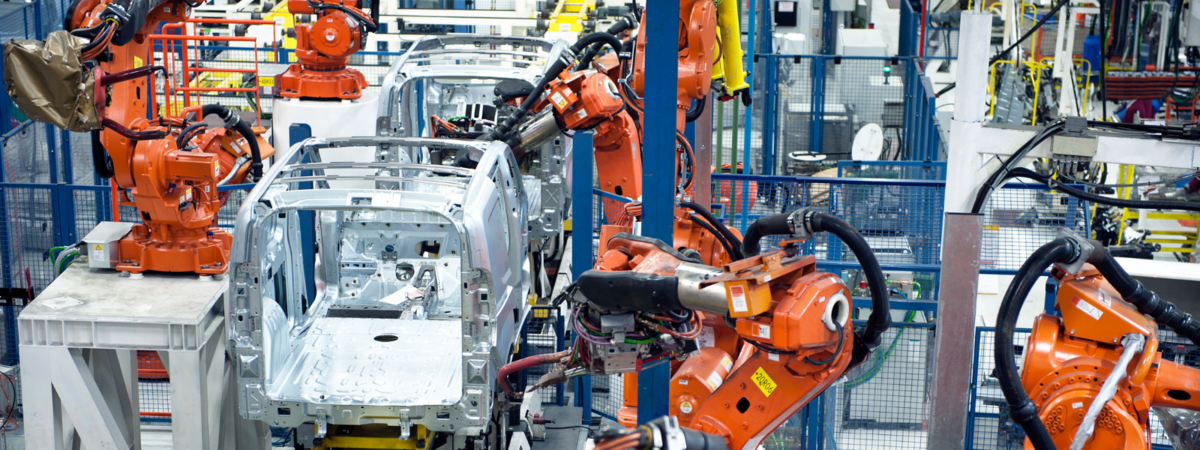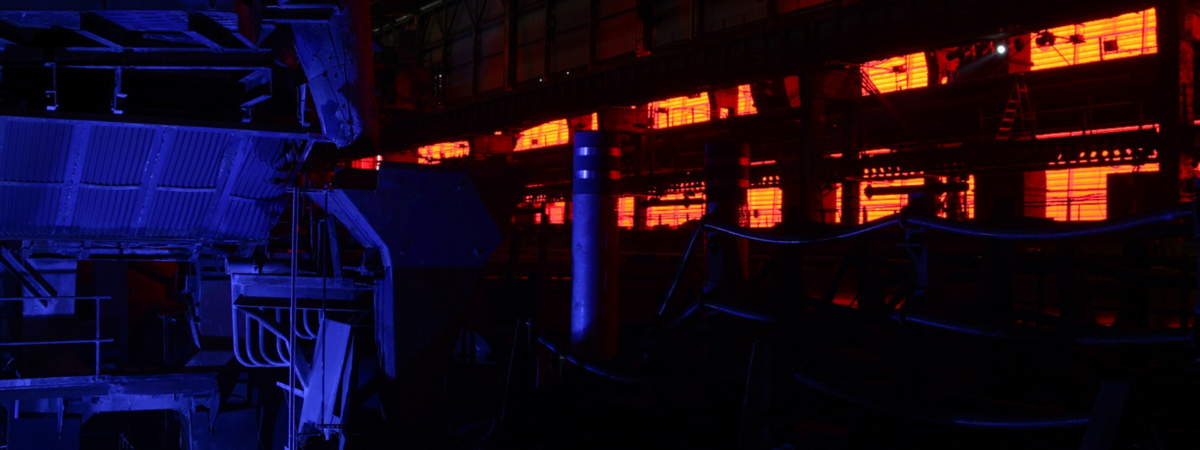6 Most Important Digital Trends For Manufacturing And Cyber-Automation In 2022
2022-08-11
How do the chip crisis, late deliveries of materials, lockdowns, and a chronic lack of qualified employees shape current trends in manufacturing automation and smart industry?
The year 2021 went down in history as another turbulent and disruptive period. Instability and fluctuations significantly affected production enterprises. Moreover, 2022 was supposed to be a period of recuperation after two intense and exhausting COVID-19-stricken years. However, it turned into another battle for the sustainability of operational processes. Emerging crises, delayed material deliveries, lockdowns, and personnel shortages create challenging conditions for efficient and effective production management.
Any expectations of positive changes in 2022 crashed on February 24 when the pandemic was replaced by the war reality. Disruptions in geopolitics have caused rising energy prices and inflation—a few of the many challenges businesses have to deal with.
In an era of crisis, outages, and obstructions, established processes and standardized procedures lose not only performance but also relevance. The global pandemic has now become a digitalization catalyst of the decade. The waves of crises accelerate the transformation processes in enterprises. Besides performance and efficiency, flexibility, resistance, and sustainability have also become key process features.
How can manufacturing companies prepare to operate in times of permanent uncertainty?
More unpredictable or barely predictable factors and circumstances affect production processes. With that, companies need to react to them quickly. The manufacturing industry really must learn to function in a time of uncertainty and rapid changes, which is why it is slowly creeping into digitalization.
Unlike other industries, production processes are something that cannot be changed in an instant to adapt to constantly evolving market conditions. In times of uncertainty, digital technologies help mitigate and minimize negative impacts and damages. By setting the operating model correctly, these technologies can also prevent more significant losses and detrimental effects. The key to flawless manufacturing is a sustainable strategy.
In light of constantly changing standards and circumstances, the following technology trends show how the near future of manufacturing enterprises and their operational processes will evolve.

Data-driven process management
"60% of professions could automate up to 30% of their work tasks." (source: McKinsey)
Data accuracy and time management are essential not only for proper planning but also for ensuring error-free and timely production and supply processes. When faced with a crisis or critical situation, it is even more important to devise:
- alternative solutions,
- contingency plans,
- or backup scenarios in relatively short intervals.
It is essential to continuously monitor and synchronize production processes during turbulent. constantly changing conditions in both the domestic and international contexts. Information flows within and outside the company are accelerating, requiring faster, more qualified decision-making. It is also for this reason that data visibility is critical in the current phase of digital transformation.
Data collection through sensors and IoT solutions has radically increased the possibilities for their use in the current era. Modern MES systems and automation MOM solutions usually incorporate both technologies. Business intelligence (BI) and basic processes of the company can be significantly improved with MES/MOM systems.
Because each production shift and daily manufacturing schedules require a lot of decisions, routine decision-making is increasingly automated with intelligent solutions. Optimization of business processes already requires dynamic, real-time management. This means more sophisticated decision-making processes have already become the subject of automation, not only routine.
As a result, data-driven process management gradually spreads to other business processes, thus coming to the fore. This strategy becomes essential in building long-term sustainability and flexibility in production processes. Additionally, it provides a temporary solution for scaling up the automation of processes related to manufacturing and assembly. Even semi-automation solutions for shop-floor can immensely benefit from data-driven processes.
Correct and accurate data, in addition to transparency of ongoing processes, are essential to lean manufacturing. Transparency in data allows businesses to identify:
- processes suitable for lean treatment,
- bottlenecks,
- or procedures that offer little to no value.
Operating costs are reduced in both cases, and unplanned expenses are minimized in the event of equipment shutdowns or quality declines.
Correctly evaluated data can also be used for data-driven process optimization strategy. With a detailed understanding of production processes, the company can quickly and accurately determine equipment capacities and the limitations of technologies.
Moreover, companies can use this data to deploy advanced automation solutions, including machine learning. The data will also serve as neural networks or other AI tools in other automation initiatives or strategies that can be further developed across the company or its supply chain.

Supply chain sustainability
"69% of companies experienced difficulties in quickly scaling production and 68% had problems reconfiguring production lines." (source: Capgemini)
Although the pandemic is no longer causing as radical supply chain disruptions as it initially did,
- material shortages,
- bottlenecks at global transport hubs,
- labor shortages and strikes,
- and climate change
will continue to have a significant impact on international supply chains.
Companies must also prepare for crisis scenarios, in which materials or components necessary for discrete manufacturing or assembly will be, at best, late or, at worst, unavailable for long periods of time.
Besides a contingency plan, companies can also prepare for supply disruptions by stocking up on essential materials. Diversifying suppliers, creating a list of alternative (backup) subcontractors, and negotiating additional (extra-standard) services if necessary can also prevent downtime due to late materials.
In order to mitigate the negative impact of outages on production and its planning, supply processes need to be transparent. Monitoring and automating the internal material flow and scheduling supplies of materials and semi-finished products or components can prevent inventory from falling below critical levels.
Companies are integrating supply and production as part of digital transformation initiatives and streamlining production processes. Connecting in-plant logistics directly with manufacturing operations or relevant shop-floor workplaces increases flexibility at production workplaces and shortens reaction times to unexpected situations.
The company can adjust its production schedule if delayed components are reported. The company's capacity should be used efficiently to prevent excessive downtime and inefficient use of its capacities.
Additionally, agile manufacturing management can enable continuity of production by omitting assembly of the missing component, which is later assembled after the restoration of material supplies. The production plan can also be modified to prioritize products not affected by the missing component and favor products from the inventory of available components.
In these situations, MES systems assist, as they can speed up or automatically schedule changes in production plans based on currently available materials and components. Additionally, these systems allow individual production procedures to be coordinated according to announced time windows for incoming material deliveries.

Just-in-Time transformation
"Supply chain failures cost the average company 45% of annual profits over ten years." (source: McKinsey)
As a result of the pandemic and its aftermath, Just-in-Time (JiT) supply management strategy was tested to its limits. Overreliance on JiT deliveries and low inventory held at the manufacturing facility exposed the pitfalls of JiT logistics. Unplanned production downtime contributed to supply shortages as well as rising operating costs.
It is especially the case when production plans are changed, or production cycles are slowed down, which delays delivery times. As a result of the pandemic, companies were also forced to review their supply methods and launch initiatives to strengthen their supply chains.
- Increasing production flexibility,
- raising demand for optimization of production times,
- the growing variability of products,
create a wider need to change the setting of manufacturing logistics and supply delivery. A modern warehouse management system (WMS) already manages stocks and intermediate warehouses dynamically as well as dispatches components for production and assembly.
JiT will not be completely replaced in the near future, but manufacturing companies will continue to adapt dynamic material supply models. One of the adepts with the potential to replace JiT time is the FMS model—flexible manufacturing system.
An FMS represents a production concept that accommodates both planned and unplanned changes. It may be due to:
- an increasing variety of products,
- the personalization of goods according to the specifications of customers,
- or volatile production volumes.
By connecting business data with production and material handling equipment, FMS automates major manufacturing processes and logistics. A separate part of the FMS system is dedicated to managing the material flow and automating storage and transfer of components.
Increasing in-house material supply demands have led to more frequent interconnections of logistics and manufacturing solutions, such as MES and WMS systems. A modern MES system integrates inventory management (orders, stocks, and warehouses) with production processes. An MES system's modularity also enables the integration of logistics solutions that aren't usually included in them, such as dynamic Milk Run (Milk Run 4.0).

D2C strategies in MANUFACTURING
"55% of consumers prefer to buy directly from brands than to buy their products from retailers." (source: Invesp)
As the market changes and consumers' preferences shift, logistics is becoming a hot topic in industrial enterprises and production facilities every year.
- Diversifying the product portfolio,
- increasing productivity,
- and personalizing products
are all impossible without flexible logistics.
As part of flexible logistics, manufacturing requirements must be met in a timely and accurate manner while at the same time respecting customer preferences when it comes to delivery times and methods. As a result, production processes are increasingly integrated with material flow management, and their coordinates are being automated in key processes.
Companies can improve supply chain efficiency by making them leaner and strengthening its resistance to outages. Furthermore, they can gradually deploy flexible manufacturing concepts and connect internal logistics with production and assembly processes by integrating advanced WES and MES systems.
As a result of the pandemic, discussions have begun regarding expanding distribution logistics in the manufacturing industry. It didn't end with the discussions. A number of companies decided to cover the delivery of the products they produced directly to customers during the first waves of the pandemic in-house.
Manufacturers normally deliver their products to distributors or vendors via a B2B channel, but this model was extended to include another channel. By delivering products directly to the end user, the manufacturer can have direct contact with its consumers and clients via D2C (direct-to-consumer) distribution. In addition to expanding delivery options, manufacturers are diversifying their customer base.
The transition to a hybrid business-distribution model is another reason why manufacturing companies are dealing more intensively with D2C logistics. In other words, it's about creating a direct link between producers and customers. In an ideal scenario, both parties benefit from such a setup—the manufacturer and the end user.
D2C allows manufacturers to sell their products through their own e-commerce platform or contracted retailers. In addition to online marketplaces, brick-and-mortar retailers, and pop-up shops, hybrid business models may also utilize dropshipping. It is a fulfillment method where the seller does not keep the goods in his own warehouse but delivers them to customers directly from the manufacturer.
D2C channels require advanced material flow management, including finished product warehouse management and order shipping. A good example would be WMS or WES systems.
In addition to D2C strategies, manufacturing companies are increasingly interested in omnichannel logistics.
Omnichannel logistics has traditionally been the domain of e-commerce and implemented by e-shops, but manufacturing companies will also have to adapt to changing customer habits and business conventions. By offering omnichannel sales, businesses can serve different customer segments with different preferences regarding the form and place of purchase as well as the method of delivery of goods.

Hybrid production operations
"7 out of 10 workers believe that the deployment of automation in their company will create better opportunities for them in the form of higher skilled work." (source: McKinsey)
In the course of the pandemic, the form of presence at the workplace was variable in manufacturing and industrial establishments as well. Technical staff also worked from home temporarily in a "home office" mode. As a result, employees used remote access to plan and manage work procedures. Managing production equipment and technologies via remote access can also involve their maintenance.
Initially used as an emergency measure, these solutions will gradually become the norm. A number of initiatives and new solutions are aimed at improving production and assembly procedures as part of the digital transformation initiatives. The current state of the labor market also calls for a transition to this type of solution.
Almost chronic shortages of qualified engineering and electrical engineers force employers to address operational sustainability. The most common method is to scale automation and find solutions with augmented intelligence tools.
A generational shift is expected to worsen the situation for employees. The biggest challenge is retaining millennials or attracting workers from the younger generation (gen Z) to this industry.
Additionally, companies aim to improve production processes and increase the quality of their products and services. In addition, there is a need to implement solutions that will enable employees to perform their work activities more efficiently and with a higher level of added value. It has therefore become increasingly common to use digital technologies in manufacturing and assembly operations.
Employee cooperation with intelligent solutions such as machine learning or other AI tools will continue to grow. By transforming conventional workplaces, artificial intelligence, robots, and employees will work together to accomplish tasks.
Digital innovations, however, also have side effects. They enhance the employer's attractiveness, thereby contributing to the company’s minimized turnover. Introducing new technologies into manufacturing and assembly processes can also result in the recruitment of new employees.
Besides implementing digital technology tools, businesses will also need to train their employees before using them. It is important for employers to motivate their employees to further develop their digital skills.
Their skills will allow them to effectively use digital technologies' possibilities in production while developing their own innovative ideas. Corporate strategies should include education and a closer connection between employees and technology in order to meet the challenges when the demand for products grows, and the labor shortage deepens.

Dark factories
“Only 35% of manual work will be occupied by routine tasks by 2030 thanks to advanced automation." (source: World Economic Forum)
Dark Factories is neither the title of the horror writer's latest novel nor another mystery series on the streaming platform.
- Automation,
- deployment of other intelligent solutions,
- and performing work tasks remotely
gave rise to the term "dark factory." The concept refers to a factory that is fully automated with lights out since there are no workers.
"Dark factories" represent a theoretical model of autonomous and self-regulatorated operations without human intervention or only minimal supervision by human personnel, such as when performing maintenance work.
The concept represents the next evolutionary step of a connected factory.
In this case, full automation uses industrial robots, AGVs, AMRs, digital twin technology, and other automation tools and equipment. In addition to the standard benefits of automation, such as
- increasing performance,
- improving quality,
- efficient management of company resources,
- and continuous operation,
the advantages of this concept include optimizing energy consumption and reducing the carbon footprint.
At present, a complete "dark factory" project would be inefficient due to the amount of investment it would require. It is important to note, however, that partial "dark factory" solutions are not necessarily unprofitable. Rather, the so-called "dark factory" solutions will increasingly be deployed not just because of labor shortages in the industry.
These solutions tend to be more appropriate for some types of production processes than their conventional management.
- The semiconductor,
- pharmaceutical,
- chemical,
- and electronics industries
are among the most suitable candidates for "dark factory" solutions. A number of companies from the listed industries have already begun implementing semi-dark factory solutions.








